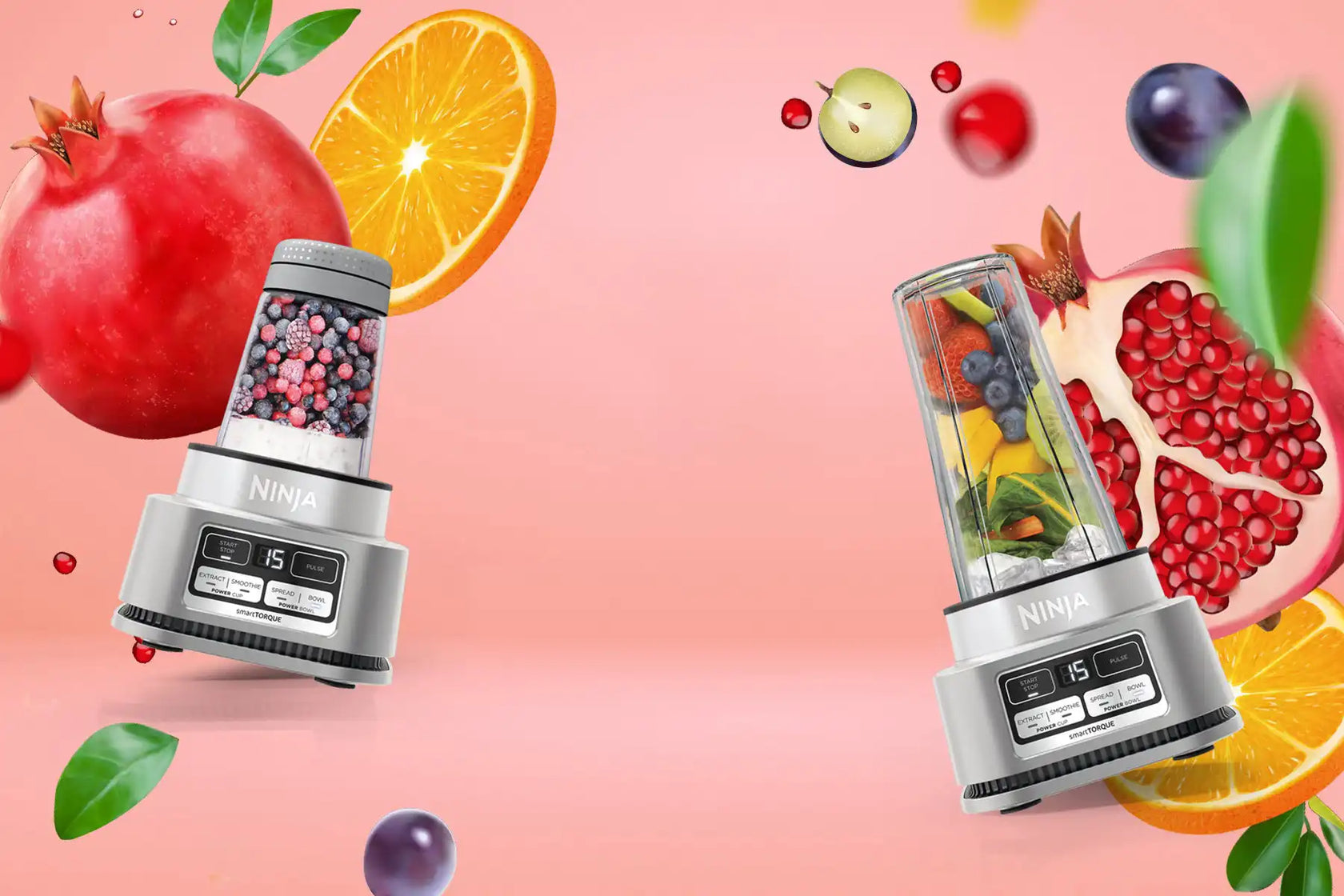Imagine this: You're building your kitchen setup for the first time, and while deciding on which appliances to get for maximum efficiency, you're stuck between two options that're different yet similar—should you buy a food processor or a blender?
While getting both is a completely valid option, this can also mean doubling your costs and decreasing your counter space. If you're just starting, it’s better to choose the one that suits your current needs to make sure you get your money’s worth. Then maybe get the other one once you've mastered cooking a little bit more!
In this guide, we’ll explore the similarities and differences between the food processor and the blender to help you make the best decision for your next kitchen purchase.
What Makes Them Alike
It’s easy to see how people can confuse the two since they share the same general function—to break down different types of ingredients.
Their appearance is similar, with a container on top of a motorized base and blades or discs that process the contents. Plus, they’re both easy to use. With the press of a button, your desired results are ready in no time!
But the similarities end there—now let’s see what sets them apart.
What Makes Them Different

Blenders usually have fixed blades with angled points to help crush ice, purée, and even liquefy ingredients. They also have taller jars shaped to keep the ingredients contained and improve circulation for even blending.
Food processors, on the other hand, usually have wider bowls and come with multiple detachable blades or discs. These can be used for puréeing, chopping, mixing, and even kneading.
Size and Capacity
When it comes to size, an average food processor can run 6 to 14 cups, while a portable blender can run 2, and larger blenders can run up to 14.
If you're mostly working with liquids, a blender’s your best bet. But for thicker, more textured mixtures, a food processor is the way to go.
Portability
For mixing on the go, the latest blender models are now designed for cordless, handheld use.
Food processors are bigger with more extensive attachments, making them perfect for home use.
How You Can Decide

With these similarities and differences in mind, I’m sure you have an inkling of which one works for you. Still unsure? These questions can help you decide:
What is your space like?
If your home has limited kitchen space, the blender is a better choice. But if that’s not a problem, the food processor can be a great addition to your setup.
What is your budget?
While both options are worthwhile investments in the long run, blenders are usually more affordable than food processors.
What is your lifestyle like?
Go for food processors if you like staying at home and exploring different recipes. But if you prefer mixing on the go with strict food preferences in mind, blenders might suit you better.
What do you want to make?
For recipes with mostly wet ingredients, you can go with a blender. It’s perfect for making smoothies, protein shakes, soups, sauces, puddings, milkshakes, oils, crushed ice, and even baby food or salsa.
For recipes with drier ingredients, the food processor is for you. It can be used to make breadcrumbs, dough, and shredded cheese as well as for chopping, dicing, and slicing vegetables.
In the end, both the blender and the food processor are smart kitchen appliances that make cooking easier. The right choice depends on your cooking style, kitchen space, budget, and preferred recipes to explore.
While there are many other ways to decide, understanding exactly what each product does can help narrow things down so you can make an informed choice. No matter which one you pick, you’ll unlock a world of delicious possibilities.
Want to explore your choices? Visit sharkninja.com.ph to see our lineup of blenders and food processors just for you!


